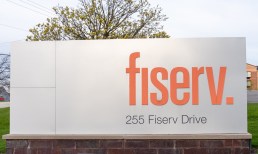Andy Elliott, VP of strategy at EvonSys, and Tanja Haase, global product lead – payment experience at global messaging network Swift, told PYMNTS during its B2B 2024 event that improving the front-end experience for cross-border payments is critical. Both Haase and Elliott noted that 80% of small businesses and consumers go to their banks first when they seek to make an international payment.
But: Get it wrong, and customers will vote with their feet.
As Elliott noted, for small business clients, banks still dominate the cross-border space — for retail banking, the market share is about 40%, which is a direct result of the challenges of cost, speed and overall experience.
“The process is more complicated than it needs to be,” Elliott said. Banks might state that a payment will arrive at a foreign beneficiary’s bank account within three to five days. The costs may be as high as $40 a transaction, and the fees are opaque.
The good news is that many banks are investing in their payments technology and are seeking to address the friction inherent in end-user experiences in the digital banking channels — but they need to upgrade the front-end portion of those experiences.
Advertisement: Scroll to Continue
Costs of Getting It Wrong
Some 70% of consumers and SMBs, Haase said, have indicated they would not use the same provider again, not if hidden fees were applied, and they did not know the exact amount that would be credited to the end beneficiaries.
“That’s a blocking point,” Haase said, for smaller firms when they are paying invoices to suppliers up and down their respective supply chains.
The challenge for financial institutions (FIs), Haase said, is to have upfront predictability on cross-border payments, particularly since there are few working agreements in place to provide their customers, upfront, with all the information they might need.
“Technology can go quite far, but if you don’t translate it into an actual transparent, easy and predictable customer journey,” she told PYMNTS, “you will be at risk of losing customers.”
The comments came against the backdrop where Swift has been conducting a “proof of value” collaboration with 25 FIs and business application providers (including EvonSys), with the goal of understanding how those FIs implement existing Swift services in their own customer channels — though a mobile app or a portal, for instance — and how those capabilities might improve the end user experience when they make international payments.
The combined services include payment prevalidation checks and Swift Go, which ensures customers receive the full amount that is sent.
The banks participating in the proof of value initiative span different regions and vary in size, Haase said, and along with the separate providers, are testing key capabilities.
“One example that we’ve looked into,” she said, “involves the better understanding of the value of end-to-end tracking, which is one of the core capabilities that Swift offers … and I can share that the products and services from Swift that they use currently, in their back ends, are likely to bring a positive impact to the customer experience.”
EvonSys, for its part, helps partner banks in the proof of value construct evaluate their own B2B payments offerings — and to see if they should integrate new functionalities into their apps, in a code-free manner. With a nod to the Swift efforts, Elliott said that the company is mulling taking a solution that it has developed for that purpose to market.
“There’s an opportunity here to help banks bring about those new capabilities and expose them into their digital customer facing channels,” Elliott said. The same Swift APIs and services that are geared toward B2B payments, he said, can be used to improve cross-border payments in retail banking.
No matter the end user, Haase said, “driving a superior experience for your end customers is the key to retaining them.”



